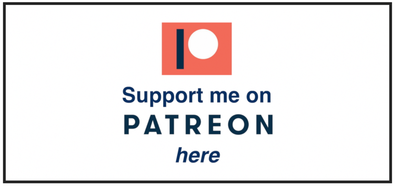Today’s Child Tax Credit Versus the Family Security Act 2.0

Summary: An analysis by the Niskanen Center of the changes FSA2 proposes concluded that poverty would drop by 13%. It would lift more than 1.1 million kids out of poverty and that’s without raising any new taxes and instead just spending what we already spend, but differently.
The enhanced child tax credit whose monthly cash payments of $250 to $300 per kid cut child poverty by a third, did not reduce employment, did not contribute to inflation, but did increase entrepreneurship, and did decrease drug use, and did decrease the number of parents selling their plasma to feed their kids, expired in January 2022 and unfortunately seems unlikely to be restored. So what now? What options are there for something better than what we have now, that could actually pass through Congress to be signed into law anytime soon? One newer option is Mitt Romney’s Family Security Act 2.0 (FSA2). This post will explain some of the key differences that set it apart from the existing child tax credit set to expire in 2025.
First, as apparent from the name, this is the second version of Romney’s original proposal that has been modified in the hopes of gaining more support among Republicans. As of this writing, version 2.0 has two other Republican senators besides Romney in support of the bill: Richard Burr of North Carolina and Steve Daines of Montana, whereas version 1.0 had no cosponsors.
FSA2 proposes providing up to $350 a month to kids under age 6, up to $250 a month to kids age 6 to 17, and up to $700 a month for pregnant women for the final four months of their pregnancy. The existing CTC provides up to $2,000 once (which even if it were monthly would be $167 a month) and provides nothing to pregnant women.
Another difference between the existing CTC and FSA2 is that the existing CTC provides nothing to anyone with an income under $2,500 a year, and does not provide the full amount until parents earn at least $24,000. FSA2 would start helping parents who earn as little as $1 a year and would provide the full amount of payments to parents earning at least $10,000. Together these two income tests mean that parents would start getting some help sooner, and more help faster than the existing CTC provides.
It’s actually really kind of nonsensical how the existing CTC doesn’t fully kick in until well after a parent is no longer in poverty. At the current federal minimum wage, it’s been estimated that a single parent would have to work over 63 hours a week, 52 weeks a year, to claim the full benefit, and at that point, they’d be about $5,300 over the federal poverty line, then boosted further above the poverty line. Doesn’t it make more sense to boost families that are under the poverty line over the poverty line instead? That’s what FSA2 would do.
The second biggest difference between the CTC and FSA2 is that the current CTC is handled entirely by the IRS, while the FSA2 payments would be distributed by the Social Security Administration. This change would reduce the overall administrative burden, and remove the distributive burden from the IRS so that the IRS could focus more of its resources on tax enforcement and collection instead of monthly payments.
There’s also one big non-difference between the CTC and FSA2, which is that FSA2 would not require additional taxes or deficit spending to fund the larger payments to more families. The proposal would instead function as a replacement for the child component of the EITC, as well as functioning as a replacement for the SALT deduction, and also replacing the head of household filing status, and the child portion of the CDCC. To quickly explain each of those, the Earned Income Tax Credit provides a tax cut to both adults and kids. The proposal here is to keep the adult portion and subsume the kid portion. The SALT deduction is a deduction for state and local taxes for high-income earners. Head of household is a tax filing status meant to help unmarried parents. It regressively provides more to those who earn more, especially the wealthiest, and the same amount to those with more than one kid as just one kid. Finally, the Child and Dependent Care Credit is meant to help cover the costs of childcare by refunding about a third of childcare expenses up to $1,050 for one kid or $2,100 for two kids per year, only after the money has been spent, versus making the care possible in the first place.
The existing system also contains marriage penalties where it doesn’t make financial sense for two people living together to get married because the household is financially better off unmarried than married. By ending HoH filing and reforming the EITC, unmarried couples with kids and married couples with kids will be treated equally, likely leading to higher marriage rates.
Make the CTC Permanent
Finally, it’s important to reiterate that the Family Security Act 2.0 is meant to be a permanent program, whereas the existing CTC is actually scheduled to expire in 2025, where it would fall from $2,000 a year back to $1,000 a year. This gives us under three years to pass something in Congress before child poverty increases significantly yet again.
An analysis by the Niskanen Center of the changes FSA2 proposes concluded that poverty would drop by 13%. It would lift more than 1.1 million kids out of poverty and that’s without raising any new taxes and instead just spending what we already spend, but differently.
Now that’s the good news. However, there are always going to be winners and losers where there are already winners and losers when changes are made to existing programs which are deciding the winners and losers, so it’s important to note that despite an overall reduction of child poverty, and despite alleviating more severe child poverty overall, FSA2 would leave certain parents in certain circumstances with less money. According to an analysis by the CBPP, single parents with two children ages 6-17 with incomes between around $15,000 and $45,000 would lose income compared to now, with parents in the middle of this range losing about $2,000 a year. Again though, the winners would be those with incomes under $10,000, and especially those with incomes under $2,500. Also, kids who are American citizens who don’t have a parent with a Social Security number will not get help under FSA2 as written.
We know child poverty is a policy choice. The end of the enhanced CTC immediately increased child poverty by 41% and also reduced parental employment by making it harder for parents to afford child care. Half a year out from the expiration, half of all parents in America are struggling to buy food thanks to record-high inflation. Over 130 economists have signed a letter declaring that restoring the CTC would not increase inflation, and yet nothing has been done to drop child poverty again.
This is all despite the fact that according to a Morning Consult poll, support for Democrats among CTC recipients fell from 49% to 43% after it expired. That’s a result of helping families for six months and then pulling the rug out from under them. Getting monthly cash to families is politically popular, especially during a time of high inflation when low- and middle-income families need help the most. Politicians looking to be seen as pro-family would be wise to seek those in agreement across the aisle and to pass something together to meet families’ real needs.
The big question is what is politically possible in a time of record-high partisanship? Is it possible for Congress to get together along bipartisan lines to help America’s children, who by no fault of their own are being hit with the effects of child poverty, and whose effects we will all pay for anyway down the line to the much more expensive tune of over $1 trillion a year? If we can help our kids and reduce that cost, isn’t that worth reaching across the aisle to do, even if there’s still more to do after that? Are our kids worth supporting and protecting, or do they just exist for political gamesmanship?
The answers to such questions will determine if bills like FSA2 that directly reduce child poverty – even if they aren’t everything all sides want – make it through the rubicon of Congress.

Do you want more content like this? Please click the subscribe button and also consider making a monthly pledge on Patreon or buying a copy of my book.
Special thanks to my monthly patrons: Gisele Huff, Haroon Mokhtarzada, Steven Grimm, Floyd Marinescu, Katie Moussouris, Zack Sargent, Jeff , David Ruark, Larry Cohen, Matthew Cheney, Frederick Weber, Patrick Brown, CanadayVibes , Kerry Bosworth, Laurel gillespie, Dylan J Hirsch-Shell, Tom Cooper, Michael Tinker, Robert Collins, Daryl Smith, Joanna Zarach, Justin Walsh, ace bailey, Daragh Ward, Albert Wenger, Andrew Yang, John Steinberger, Bridget I Flynn, Peter T Knight, David Ihnen, LT, Myles McLane, Max Henrion, Elizabeth Corker, Reid Rusonik, Gray Scott, Gerald Huff, Albert Daniel Brockman, Michael Honey, Natalie Foster, Joe Ballou, Chris Rauchle, Arjun , chris heinz, Patricia Pedrosa, Herb, Jodi Sarda, Austin Begin, Sharon Woodhouse, Rosa Tran, Deanna McHugh, Ryan Ash-Miller, miki, Ken Warner, Adam Parsons, bradzone, Lee Lor, Senang Diri, Akber Khan, John Sullivan, Kurt Bunker, Team TJ, Yang Deng, Elliot Lee, Yan Xie, Marie janicke, Iggy C, engageSimply - Judy Shapiro, AYFAQ.com , Phuong Truong, Tim , Warren J Polk, Timothy P O'Connor, Jeffrey Emmett, Stephen Castro-Starkey, Oliver Bestwalter, Kev Roberts, Walter Schaerer, Brian Peiris, Loren Sickles, anti666, Eric Skiff, Thomas Welsh, Kai Wong, and Laura Ashby.
_large.jpg)
UBI Guide Newsletter
Join the newsletter to receive the latest updates in your inbox.
